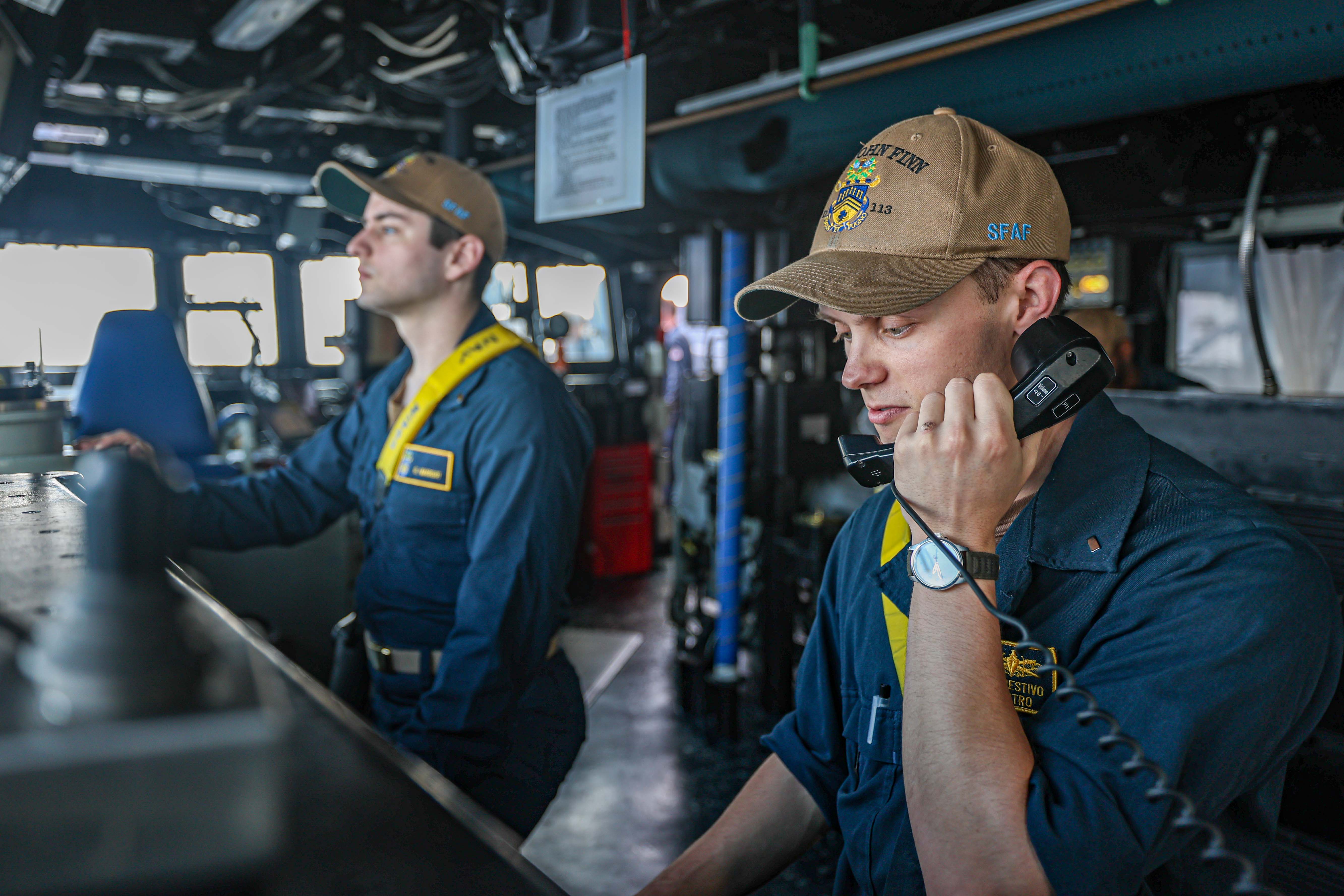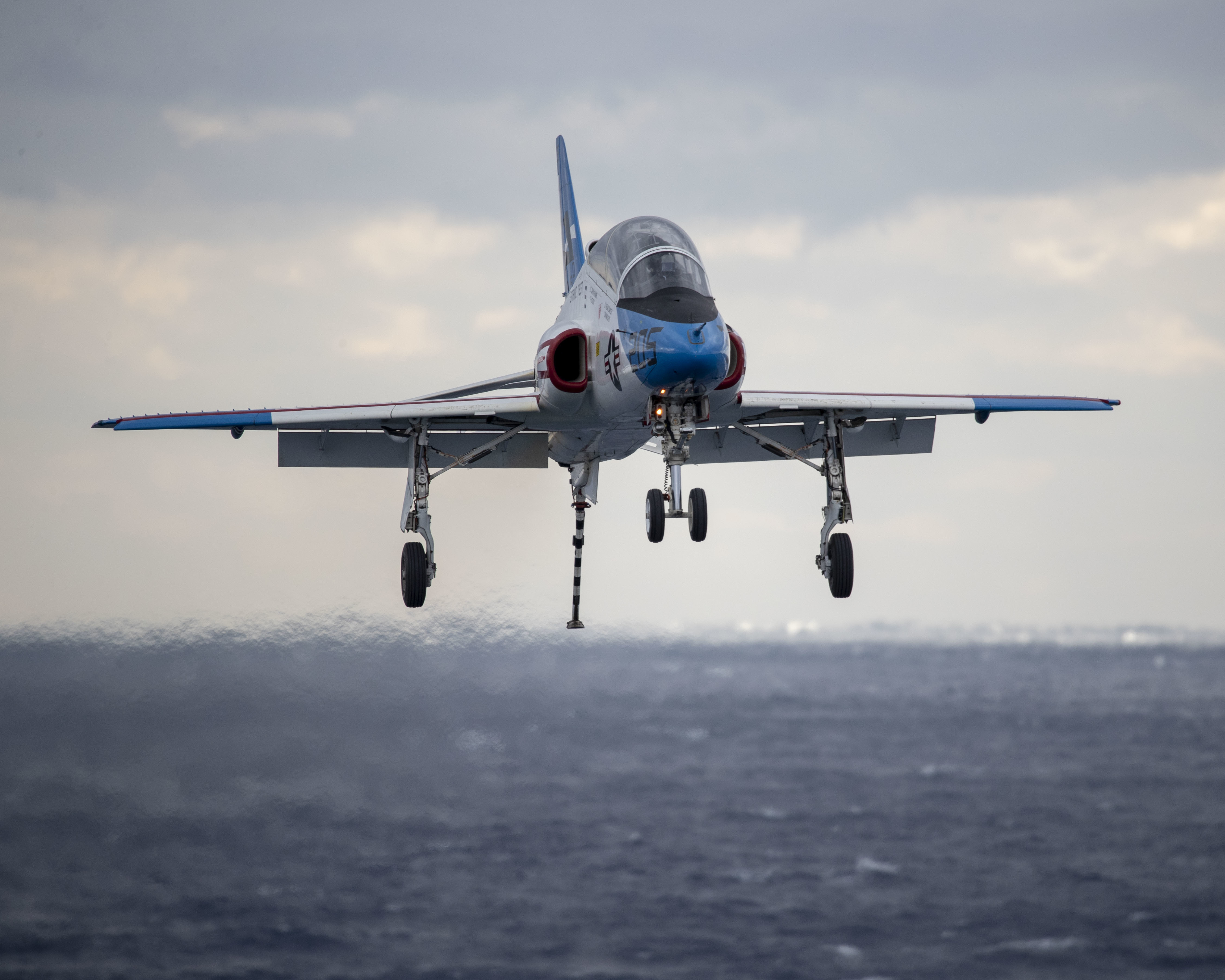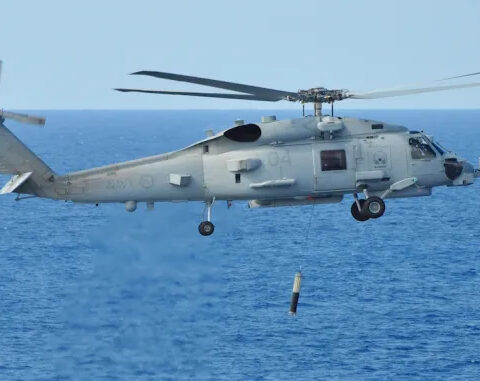
The U.S Navy conducted two drills in the South China Sea this week, including a joint trilateral drill with the Japan Maritime Self-Defense Force and the Royal Australian Navy and the third iteration of the Maritime Cooperative Activity with the Philippines.
Meanwhile the Theodore Roosevelt Carrier Strike Group is currently in Guam on a port visit.
From Wednesday to Thursday, destroyer USS John Finn (DDG-113) and Littoral Combat Ship USS Gabrielle Giffords (LCS-10) drilled with JMSDF destroyer JS Sazanami (DD-113) and RAN frigate HMAS Warramunga (FFH152), according to a release from U.S. 7th Fleet.
“We believe that through this trilateral exercise, we were able to improve our tactical capabilities and strengthen cooperation with the U.S. Navy and the Royal Australian Navy, as well as embody their strong will and ability to create a security environment that does not tolerate unilateral changes to the status quo by force” Sazanmi, commanding officer Cmdr. Masayuki Ban said in a JMSDF news release.
Warramunga is on a three month regional presence deployment to South and Southeast Asia, having left its homeport of Sydney on Jan. 23. Meanwhile, Sazanami is making its way to the Gulf of Aden as the 47th Deployment Surface Force for the Counter Piracy Enforcement (DSPE) and will relieve destroyer JS Akebono (DD-108), which has been on station. Since 2009, Japan has routinely deployed a destroyer to the Gulf of Aden for an anti-piracy escort mission. From Feb. 18-27, Sazanami will participate in the Indian Navy’s multilateral exercise Milan, held in the Bay of Bengal, before continuing on to the Gulf of Aden.
The Republic of Korea Navy’s 42nd Cheonghae unit – which includes destroyer ROKS Dae Jo-yeong (DDH-977), an embarked Super Lynx helicopter, ROKN SEALs, Republic of Korea Marines and a medical team – is also heading to the Gulf of Aden. The unit left left Jinhae Naval Base on Feb.1, according to a South Korea Ministry of National Defense news release.
Formally known as the ROKN Somali Sea Escort Task Group and built around a ROKN destroyer, the unit has deployed on counter-piracy missions since 2009 and has carried out a number of combat engagements with Somali pirates, notably in January 2011, when eight Somali pirates were killed and five were captured when the unit successfully rescued the crew of a hijacked tanker.
Meanwhile, the U.S. Navy and the Philippine Navy conducted the third iteration of the Maritime Cooperative Activity (MCA) in the South China Sea on Friday, 7th Fleet announced.
Gabrielle Giffords, along with its embarked MH-60S helicopter, drilled with Philippine Navy offshore patrol vessel BRP Gregorio Del Pilar (PS-15) and a Philippine Navy AW109 Helicopter, according to the news release. Gregorio Del Pilar is the former USCGC Hamilton (WHEC-715).
“The MCA displays the enduring partnership between the two militaries and advances combined capabilities in the evolving maritime domain through routine goodwill activities at sea” reads the news release, which notes the two nations focused on interoperability and joint planning.
Gabrielle Giffords is one of three Littoral Combat Ships currently deployed to the Indo-Pacific. USS Manchester (LCS-14) and USS Mobile (LCS-26) are the other two ships. Manchester recently completed a 34-day deployment in the South China Sea, according to a message by commanding officer Cmdr. Ralph Lufkin in the ship’s public newsletter. Lufkin noted that the LCS has smaller fuel tanks, limited spare parts and food storage space and a smaller crew than destroyers and was designed with a planned at-sea endurance of less than a month.
“Through hard work and ingenuity, the crew overcame these challenges in January and showed that these ships are capable of extended periods underway!” wrote Lufkin.
Manchester sailed 6,143 nautical miles and its embarked MH-60S Knight Hawk helicopter flew 162 hours in January. Manchester subsequently pulled into Subic Bay, Philippines following the deployment.
Earlier on Tuesday, the Theodore Roosevelt CSG pulled into Subic Bay to resupply and refuel, according to a social media post by Naval Base Guam. Local news channel Kuam News reported that destroyers USS Daniel Inouye (DDG-118) and USS Kidd (DDG-100) were also pulling into Guam with carrier USS Theodore Roosevelt (CVN-71). The carrier deployed with cruiser USS Lake Erie (CG-70) and destroyers USS John S. McCain (DDG-56), USS Halsey (DDG-97) and Daniel Inouye. Kidd deployed as part of the Carl Vinson CSG, which is currently operating in the Philippine Sea.





